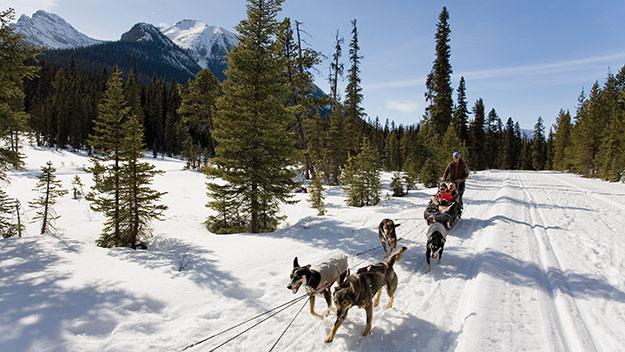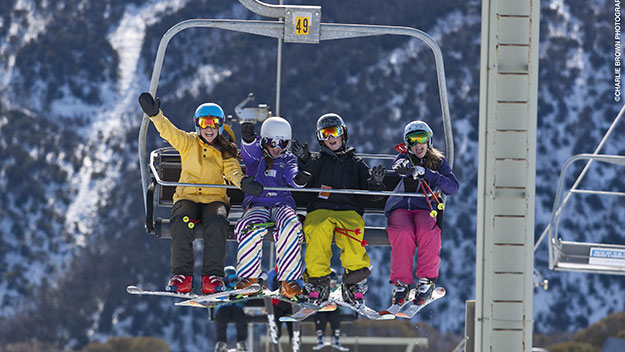Imagine for a moment, we’re in Patagonia in southern Chile, a place so remote, it’s been called “the land at the end of the earth”. We’re on a trek with 10 strangers in one of the world’s most beautiful national parks, Torres Del Paine. It’s exhilarating, but also a little alarming.
After three days walking through alpine meadows under the lofty snow-capped peaks of the Andes, we haven’t seen a house or a parking meter, let alone a dirt road. Familiar household sounds, such as the old fridge humming in the corner of the kitchen or the faint babble of a sit-com emanating from next door, are distant memories. Instead, there’s the unsettling sound of flapping canvas as our tents are buffeted by a stiff breeze. And the only neighours are guanacos, delicate llama-like creatures, that stare straight through us.
In fact, the one constant is the wind in all its moods, whether it’s momentarily light enough to ruffle your hair or strong enough to slap you in the face. Even the condors seem to be at its mercy as they reel across the sky.
Patagonia lies within the roaring forties and crosses the borders of Argentina and Chile, that band below 40 degrees south, where the air is in perpetual motion around the planet and, as we trek through this spectacular wilderness past sombre lakes and luminous glaciers, the manifold sounds it creates as it sweeps over the landscape become our companions.
The rustling leaves in the forests of stunted beech trees sound like reassuring whispers: “Just another stream to ford, it’s getting easier, one more slope to climb and success is yours.”
Even when a thumping blast almost knocks you off your feet, the echo that comes resounding back after it has slammed into a 1000-metre wall of granite sounds like the roaring applause from a distant stadium.
Yet, most welcome of all, is the steady blow that suddenly comes from behind and pushes you triumphantly up a hill. This is when our fellow trekkers swallow their curses and laugh with delight.
The holy grail of this park are three giant granite pillars, the Torres Del Paine (Towers of Paine), that soar almost vertically for 2000 metres above the Patagonian steppe. Around sunrise and sunset, these colossi turn vibrant pink. It’s Patagonia’s Uluru, a rock that also changes colour just before dusk — from rust to blood red. Some people confuse Patagonia with the pampas, the endlessly flat steppe in Argentina that stretches from one horizon to the other — sometimes called the “Nullabor of South America”.
In reality, Patagonia has many landscapes. In the Torres Del Paine National Park, the pampas gives way to undulating hills that in turn are dwarfed by the great bulk of the Andes. In spring, wide U-shaped valleys fill with wild flowers as frozen streams thaw and begin to flow.
Even so, only the trekkers seem impressed. The guanacos appear to have seen it all before. So have the flocks of small emu-like birds (rheas) that keep strutting across the grassland. Maybe, they are too busy keeping an eye out for the ever-present, but rarely seen puma, Patagonia’s top predator.
Now and then, trekkers catch sight of Patagonian cowboys (known as huasos in Chile and gauchos in Argentina) galloping across the pampas as they round up wild horses. Once they were graziers, but since Torres Del Paine was declared a UNESCO Biosphere World Reserve in 1978, livestock has been banned in the park.
On our trek, the wind blew constantly for a week. Then one day as we were walking on a track between a beech forest and Glacier Grey, it vanished in an instant, as if kidnapped and dropped into a vast chasm. They say silence is golden. And believe me, in Patagonia it is. When all is still, the landscape comes alive. Bird song fills the air and even the guanacos return your gaze.
On the day the wind died, Glacier Grey, a five-kilometre wide rugged river of ice, let out a great sigh – one worthy of Methuselah. Startling at first, it was followed by a sonar-like ping and deafening crack. “Those are the sounds of pent-up forces being released,” the tour leader said reassuringly. “She’s a mover, all right, deep down.” More than 20,000 years old, Glacier Grey is very much awake and on the move. Yet its bulk is so vast and its speed so slow that to the human eye it appears as stationary as the mountains that surround it, until that is, some monumental block of ice, weaker than the rest, is crushed by a glacial cataclysm.
Sadly, the glaciers in Patagonia are in retreat, on average by four metres a year. Not even the Great Patagonia Ice Sheet, one of the largest after the Poles, is immune to global warming.
Of all the glaciers, the big fella is Perito Moreno. You’ll find it at the end of a six-hour drive along a rugged dirt road in Argentina, past the frontier town of Califate, in Los Glaciares National Park. It’s one of the biggest glaciers in the world and worth every pothole and bump getting there.
If you’re relatively fit, a trek through the Torres Del Paine National Park can be a life-affirming experience. Only the experts climb the mountains and cross the crevasses; for the rest of us it’s a daily six-to-nine-hour slog across moderate terrain. However, if you’re the type of person who drives 200 metres to pick up a pack of cigarettes, best not.
Which brings us to what is billed as the trek’s high point – the pilgrimage to the Torres (Towers) of Paine. It was a trying seven-hour walk at trek’s end — first, through a beautiful beech forest and then across a nightmarish moraine field strewn with boulders. And on the appointed day, what came into view? A large dam full of dirty water, a stupendous rock face and the colossi looking bashfully brown under a leaden sky. No glowing pink for us!
Be warned: Patagonia can weave a spell. In his celebrated book, In Patagonia, author Bruce Chatwin records a conversation with a poet of 40 years’ residence: “His fingers gripped my arm. He fixed me with an intense and luminous stare. “Patagonia!” he cried. “She is a hard mistress. She casts her spell. An enchantress! She folds you in her arms and never lets go.”
And, in part, it’s true. Once visited, never forgotten. Will you return? That depends on whether you can sing along happily with the wind.
TRAVEL TIPS
Summer trekkers who find it difficult to sleep in a tent with flapping canvas can stay in refugios — snug hostels, built of wood, usually next to the park’s main landmarks.
Achieve a good fitness level before going.
Buy a good pair of trekking boots and wear them in gradually before your vacation to avoid getting blisters on the trek.
Take a large day backpack, warm sleeping bag, fleece and light waterproof jacket and trousers; water bottle and sun block and hat; plus trekking snacks such as muesli bars.
Dress in layers of clothing, so you can peel off and put on clothes as needed.
Get in the spirit and read some of the following books:In Patagonia(Bruce Chatwin),The Old Patagonian Express(Paul Theroux), Lonely Planet guide toArgentina, Uruguay and Paraguay(includes Chilean Patagonia).
Lan and Qantas fly daily to Santiago, via Auckland or Los Angeles. From Santiago, Lan has a daily four-hour flight south to Punta Arenas, where a five-hour drive to Puerto Natales takes you to the Torres Del Paine National Park. World Expeditions has six tours/treks to Patagonia, several of which visit Torres Del Paine National Park. Chilean Tourism Promotion Corporation is a great place to start planning your travels.


